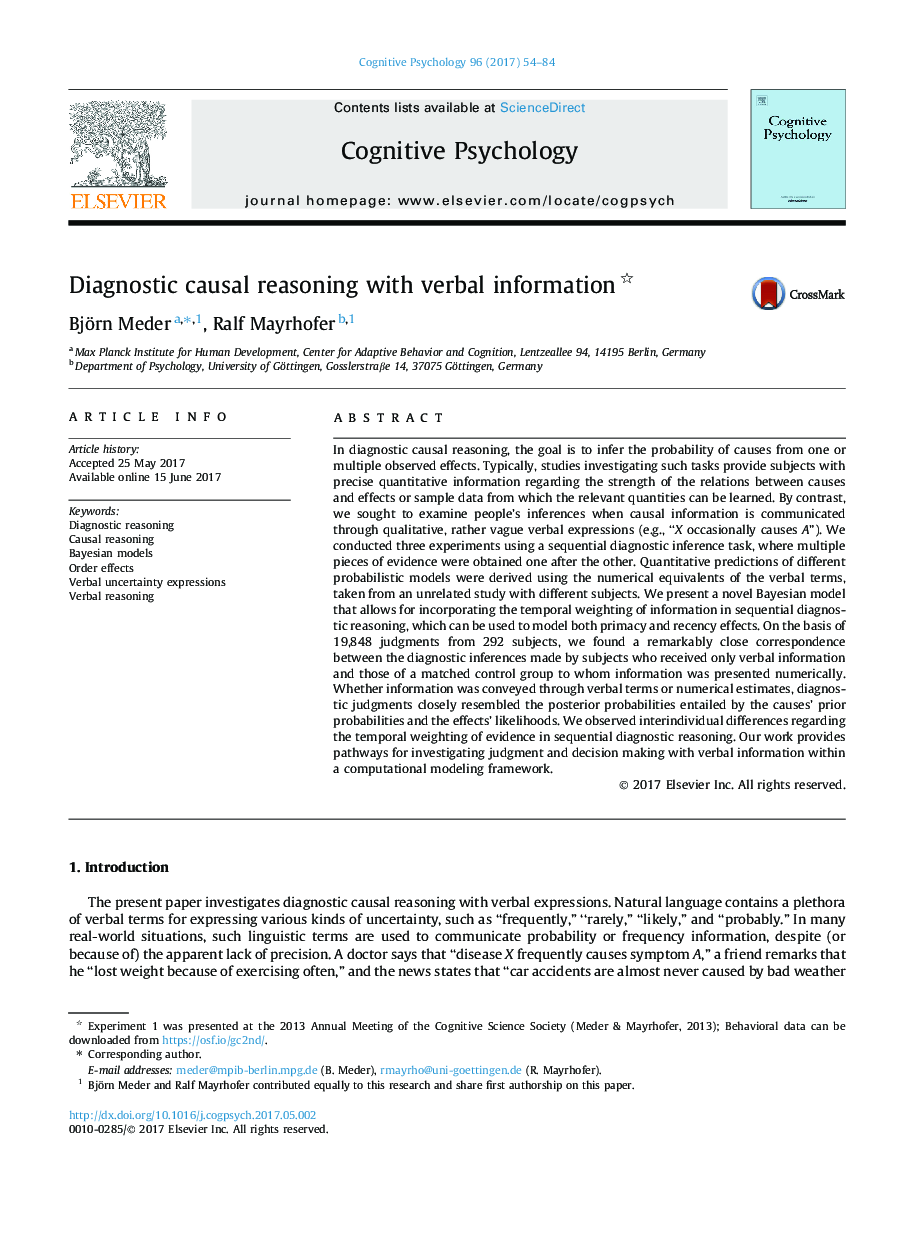| Article ID | Journal | Published Year | Pages | File Type |
|---|---|---|---|---|
| 5039705 | Cognitive Psychology | 2017 | 31 Pages |
â¢Linguistic expressions of uncertainty do not easily fit with computational models.â¢Three studies investigated sequential diagnostic reasoning with verbal terms.â¢Model predictions were derived from numerical equivalents elicited in another study.â¢Inferences based on verbal and numerical information were highly similar.â¢New Bayesian model can be used to model both primacy and recency effects.
In diagnostic causal reasoning, the goal is to infer the probability of causes from one or multiple observed effects. Typically, studies investigating such tasks provide subjects with precise quantitative information regarding the strength of the relations between causes and effects or sample data from which the relevant quantities can be learned. By contrast, we sought to examine people's inferences when causal information is communicated through qualitative, rather vague verbal expressions (e.g., “X occasionally causes A”). We conducted three experiments using a sequential diagnostic inference task, where multiple pieces of evidence were obtained one after the other. Quantitative predictions of different probabilistic models were derived using the numerical equivalents of the verbal terms, taken from an unrelated study with different subjects. We present a novel Bayesian model that allows for incorporating the temporal weighting of information in sequential diagnostic reasoning, which can be used to model both primacy and recency effects. On the basis of 19,848 judgments from 292 subjects, we found a remarkably close correspondence between the diagnostic inferences made by subjects who received only verbal information and those of a matched control group to whom information was presented numerically. Whether information was conveyed through verbal terms or numerical estimates, diagnostic judgments closely resembled the posterior probabilities entailed by the causes' prior probabilities and the effects' likelihoods. We observed interindividual differences regarding the temporal weighting of evidence in sequential diagnostic reasoning. Our work provides pathways for investigating judgment and decision making with verbal information within a computational modeling framework.
